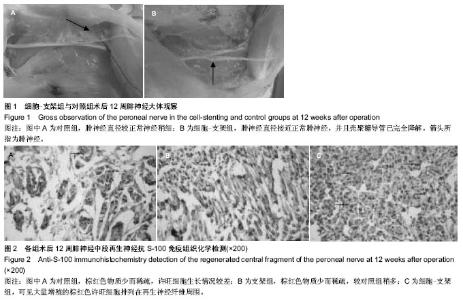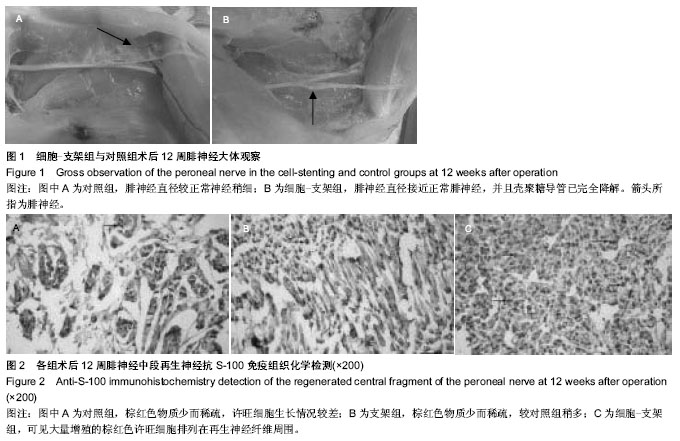| [1] Giovasidis G,Watanabe O,Mackinnon SE,et al.Functional and morphometric evaluation of end-to-side neur-orrhappy formscle reinnervation.Plast Reconstr Surg.2000;106(4): 383-392.
[2] Song C,Oswald T,Yan H,et al.Repair of partial nerve injury by bypass nerve grafting with end-to-side neurorrhaphy.Reconstr Microsyrg.2009;25(8):483-495.
[3] Spyropoulou GA, Lykoudis EG, Batistatou A, et al. New pure motor nerve experimental model for the comparative study between end-to-end and end-to-side neurorrhaphy in free muscle flap neurotization.Reconstr Microsyrg. 2007;23(7): 391-398.
[4] Zhang Z,Sourcacos PN,Bo J,et al.Evaluation of collateral sprouting after end-to-side nerve coaptation using a fluoresceng double-labeing technique. Microsurgery.1999;19(6):281-286.
[5] Kim JK,Chung MS,Baek GH.The origin of regenerating axons after end-to-side neurorrhaphy without donor nerve injury.J Plast Reconstr Aesthet Surg.2010;64(2):255-260.
[6] Cho H,Seo YK,Jeon S,et al.Neural differentiation of umbilical cord mesenchymal stem cells by sub-sonic vibration.Life Sci. 2012;90(15-16):591-599.
[7] Magdi Sherif M,Amr AH.Intrinsic hand muscle reinnervation by median-ulnar end-to-side bridge nerve graft: case report.J Hand Surg Am.2010;35(3):446-450.
[8] 张耀光,陈东生,黄潮桐,等.神经端侧吻合的临床应用及效果探讨[J].右江医学,2003,31(5):429.
[9] Jain A,Gulbake A,Shilpi S,et al.A new horizon in modifications of chitosan: syntheses and applications.Crit Rev Ther Drug Carrier Syst.2013;30(2):91-181.
[10] Serge R,Schwab M,Schwartz M,et al.Spinal cord injury:time to move?J Neurosci.2007;27(44):1782-11792.
[11] Mitchel KE,Weiss ML,Mitchell BM ,et al.Matrix cells from Wharton S jelly form neurons and gliaⅢ.Stem Cells. 2003;21(1):50-60.
[12] Lund RD,Wang S,Lu B,et al.Cells isolated from umbilical cord tissue rescue photorcceptors and visual functions in a rodent model of retinal disease.Stem Cells.2007;25(3):602-611.
[13] Baksh D,Yao R,Tuan RS.Comparison of proliferative and multilineage differentiation potential of human mesenchymal stem cells derived from umbilical cord and bone marrow.Stem Cells.2007;25(6):1384-1392.
[14] Karahuseyinoglu S,Cinar O,Kilic E,et al.Biology of the stem cells in human umbilical cord stroma:in situ and in vitro surveys.Stem Cells.2007;25(2):319-331.
[15] Ma L,Feng XY,Cui BL,et al.Human umbilical cord Wharton’s jelly-derived mesenchymal stem cells differentiation into nerve-like cells.Chin Med.2005;118(23):1987-993.
[16] Shetty P,Cooper K,Viswanathan C.Comparison of proliferativeand muhilineage Differentiation potentials of cord matrix,cord blood,and bone marrow mesenehymal stem cells.Asian J Transfus Sci.2010;4(1):14-24.
[17] Kermani AJ,Fathi F, Mowla SJ.Characterization and genetic manipulation of human umbilical cord vein mesenchymal stcnl cells:potential application in cell-based gene therapy. Rejuvenation Res.2008;11(2):379-386.
[18] Woodbury D,Sehwarz EJ,Proekop DJ,et al.Adult rat and human bone marow stromal cells difierentiate into neurons.J Neurosci Res.2000;61(4):364-370.
[19] Wang HS,Hung SC,Peng ST,et al.Mesenehymal stem cellsin the Wharton’s Jelly of the human umbilical cord.Stem Cells. 2004;22(7):1330-1337.
[20] Zhu JX,Shen ZL,Qin JB,et al.A novel method to isolate mesenchymal stem cells from the human umbilical cord.Prog Mod Biomed.2010;10(6):1164-1169.
[21] Troyer DL,Weiss ML.Concise review:Wharton s Jelly-derived cells are a primitive stromal cell population.Stem Cells. 2008; 26(5):591-599.
[22] Liu XY, Li DB, Jiang D,et al. Acetylcholine secretion by motor neuron-like cells from umbilical cord mesenchymal stem cells. Neural Regen Res.2013; 8(22): 2086-2092.
[23] Fu YS,Cheng YC,Lin MY,et al.Conversion of’hunlan unlhilical cord mesenchymal stem cells in Wharton s jelly to dopaminergic neurons in vitro:potential therapeutic application for Parkinsonism.Stem Cells.2011;24(1):115-124.
[24] Ding DC,Shyu WC,Chiang MF,et al.Enhancement of neuro plasticity through upregu[ation of betal—integrin in human umbilical cord-derived stromal cell implanted stroke model. Neurobio1 Dis.2007;27(3):339-353.
[25] Fu YS,Shih YT,Cheng YC,et al.Transformation of human umbilical mesenchymal cells into neurons in vitro.J Biomed Sci.2004;11(5):652-660.
[26] Li Z,Qin HJ,Feng ZS, et al. Human umbilical cord mesenchymal stem cell- loaded amniotic membrane for the repair of radial nerve injury. Neural Regen Res.2013;8(36): 3441-3448.
[27] Chen K,Wang D,Du WT,et al. Human umbilical cord mesenchymal stem cells hUC-MSCs exert immunosuppressive activities through a PGE2-dependent mechanism. Clin Immunol. 2010;135(3):448-458.
[28] Ariani MD,Matsuura A,Hirata I,et al.New development of carbonate apatite-chitosan scaffold based on lyophilization technique for bone tissue engineering.Dent Mater J. 2013; 32(2):317-325.
[29] Jain A,Gulbake A,Shilpi S,et al.A new horizon in modifications of chitosan: syntheses and applications. Crit Rev Ther Drug Carrier Syst.2013;30(2):91-181.
[30] Wang Y,Han ZB,Ma J,et al.A toxicity study of multiple- administration human umbilical cord mesenchymal stem cells in cynomolgus monkeys.Stem Cells Dev. 2012;21(9): 1401-1408. |

